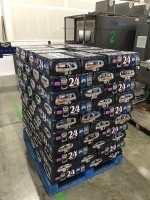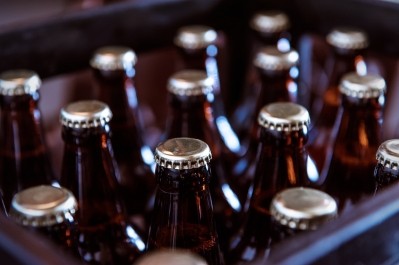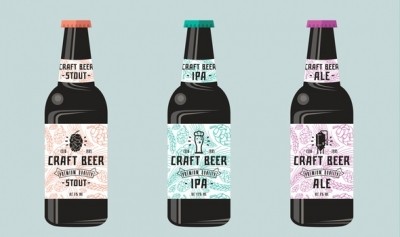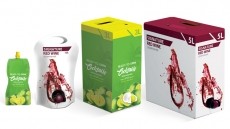Craft Brewers Conference
Oskar Blues sees adoption of larger format craft beer packaging on the rise
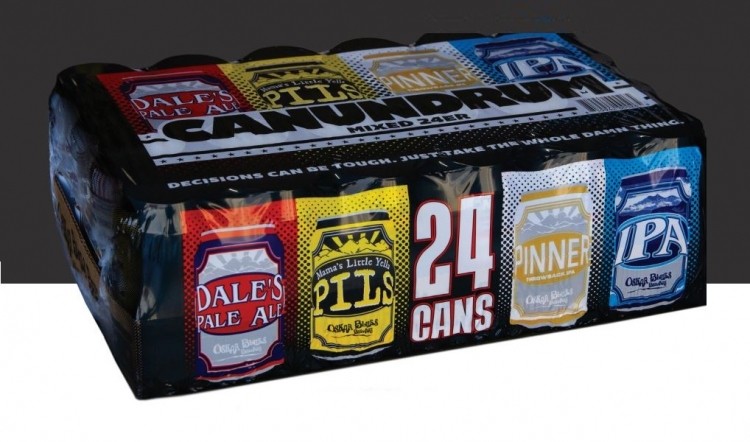
Based in Lyons, Colorado, Oskar Blues is part of the five-brewery CANArchy Craft Collective with brewery locations located around the US.
Jeremy Rudolf, operations manager for CANArchy Craft Collective, received feedback from several club store retailers like Costco that they were looking for a large format pack of craft beer but were not satisfied with the options on the market.
“They actually turned down multiple other formats. They wanted something that’s fully enclosed and that has a good shelf presence,” Rudolf told BeverageDaily at the Craft Brewers Conference in Nashville, Tennessee, this week.
Its current large format solution was binding together two 12-pack cartons with a clear plastic wrapping, but that had some disadvantages from a shelf appeal standpoint, according to Rudolf.
“Because it’s a smaller package to begin with, everything is smaller font, so it doesn’t read as well,” he said. “And it was pretty wasteful.”
Rudolf and his team considered other options such as a large format corrugated box, a packaging format that is fairly common, but it was a conversation he had with The Dow Chemical Company that led him to adopt plastic shrink packaging that eliminated the cardboard boxes.
“If you look at shrink packaging, it’s ubiquitous in other places across the world, but we really wanted to see why isn’t anyone taking the helm [in craft beer] here?” said Ritika Kalia, end-use marketing managing at Dow Packaging and Specialty Plastics.
She added that the bottle water and carbonated soft drinks industries have been using shrink packaging for years, but it was almost nonexistent in the US craft beer market.
Dow developed a three-layer polyethylene plastic material that could hold together 24 cans (and more) of beer using 0.75 ounces (24 grams) of film.
With the purchase of two machines, Oskar Blues packages and shrink wraps its 24-can cases onsite at its Colorado facility, according to Rudolf.
According to Dow, its shrink wrap packaging has delivered 40% cost savings, 64% reduction in secondary packaging materials, and 73% fewer trucks delivering packaging materials to the brewery.
Shelf appeal and branding
From a branding perspective, the shrink wrap developed by Dow gave Oskar Blues’ 24-can variety pack added shelf
appeal, according to Rudolf.
“They say the problem with plastic is it looks like plastic: well, not when you use good artwork and make it look like a nice, premium packaging,” Rudolf said.
Oskar Blues is able to reverse print directly on the inner layer of its shrink wrap with the help of Berry Global, a film converter partner based in Bowling Green, Kentucky. The end product is customized secondary packaging that provides a spacious canvas for the brewery’s branding.
“It’s not meant to just get it there; this packaging actually sells the beer,” Rudolph added. “It has a presentation.”
Since piloting the packaging in late 2017, Oskar Blues has seen a 300% sales growth through its national retailers.
Larger formats catch on in craft beer
As craft beer has reached the tipping point of mainstream appeal with US consumers, breweries have experimented by increasing their pack sizes to accommodate for rising demand. However, cases as large as 24 cans are still quite rare, and is a packaging size typically dominated by mainstream domestic beer brands, Rudolf noted.
“Craft is moving into larger formats as it tries to compete with those [premium domestic beer brands],” he said.
“Large format packaging above a 12-pack is not that common in craft beer – 15-packs are starting to catch on as kind of the value purchase for craft.”
Rudolf sees its improved 24-pack variety offering as a clear advantage for capturing the regular craft beer drinker or for consumers looking to stock up on a variety of beers for larger social events like a barbecue.
“It’s somewhat consumer and market specific, but instead of going and buying four different six packs, we can do it for you,” Rudolf said.
Rudolf sees potential for using shrink packaging for smaller formats as well.
“Who’s to say that the 12 pack shouldn’t be set up that way? We don’t rule anything out. We’re presently using all different forms of packaging and eventually one becomes more dominant than the other,” he said.
“We used to be all corrugated stuff, but now we use almost none besides the case tray in all of our packaging.”
Due to the standalone strength of the shrink packaging, Oskar Blues plans to phase out the corrugated cardboard tray its currently using in its 24-can packs.
